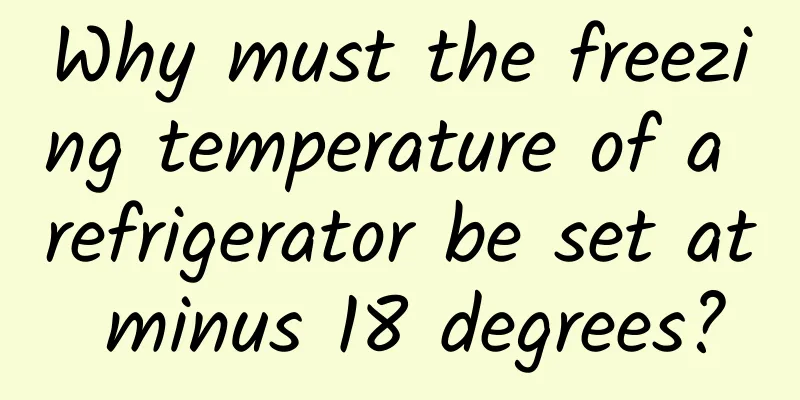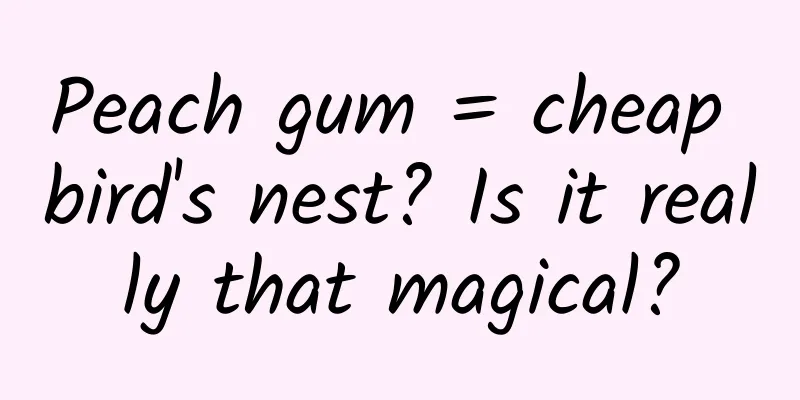Why must the freezing temperature of a refrigerator be set at minus 18 degrees?

|
Summer is here, and the weather is getting hotter. As the temperature rises, many pathogenic microorganisms are breeding in our daily lives. Although they are not as highly infectious as the new coronavirus, once we are infected, they can still make us seriously ill. Moldy fruit. Image source: Tencent.com In order to prevent food from spoiling in the summer, refrigerators have become one of our daily essential appliances. Speaking of refrigerators, I remember the doubts I had when I was a child: since food can be frozen at a few degrees below zero, why should the temperature of the refrigerator's freezer be set to around minus 18 degrees? Isn't this a waste of electricity? Household refrigerator. Image source see watermark It was not until I learned relevant knowledge that I realized that -18 degrees Celsius is very necessary. If economics permit, the lower the freezing temperature, the better. The main reasons are the following two points. Minimize the activity of microorganisms and enzymes Food spoilage that we encounter in life is generally caused by three situations: the growth of microorganisms, the decomposition of enzymes, and the progress of chemical reactions (mainly oxidation). By placing food in the freezer, the activity of microorganisms and enzymes can be reduced through low temperatures. The lower their activity, the longer the food can be preserved. Corrupted apple. Image source: Wikipedia Studies have found that a low temperature environment of -12 degrees Celsius can effectively inhibit the activity of microorganisms, while a low temperature environment of -18 degrees Celsius can effectively inhibit the activity of enzymes. Therefore, if you want to store food in a frozen state for a long time, the temperature of the freezing area must be at least -18 degrees Celsius. Keep food as tasty as possible In fact, people have tried to freeze food for storage a long time ago. However, they found that the food would always become soft and mushy after thawing, and completely lost its original taste. Therefore, frozen food had no market at first. Tomatoes that were frozen and then thawed became wilted. Image source: Sina.com It was not until the 1920s that American Clarence Birdseye accidentally discovered the key technology for long-term low-temperature storage of food - quick freezing technology - while fishing in the cold regions of North America. He became a world-famous king of quick-frozen food. The key point of quick-freezing technology is that during the freezing process, food must pass through the "maximum ice crystal formation zone" as quickly as possible. What is the “maximum ice crystal formation zone”? The "maximum ice crystal formation zone" refers to the temperature range of 0℃ to -5℃. In this temperature range, water molecules in fruits, vegetables, raw meat and other foods (including free water in the intercellular space, free water in the cells and bound water) will quickly condense into larger ice crystals. These ice crystals can easily pierce the cell walls of cells, causing the loss of cytoplasm. Without intact cells as support, these foods will naturally become wilted and lose their original taste. The change of ice crystal morphology in onion cells with cooling rate. Image source: Reference [1] Changes in onion cell deformation with cooling rate. Image source: Reference [1] Therefore, in order to ensure that the cell walls are not punctured by large condensed ice crystals, the temperature of the food must pass through the zone of maximum ice crystal formation in the shortest time. At present, according to the standards of my country's quick freezing technology, food that passes through the maximum ice crystal formation zone within 30 minutes can be called quick freezing. When using quick freezing technology to store food, the water molecules inside can condense into countless tiny ice crystals with a diameter of less than 100 microns. The distribution of these ice crystals in the food tissue is basically the same as the distribution of water before freezing, so the damage of ice crystals to food tissue can be greatly reduced. Different shapes of ice crystals formed by slow air freezing (top) and pressure-relief super-freezing (bottom). Image source: Reference [2] Can household refrigerators quickly freeze and preserve food? For household refrigerators, it usually takes one to two hours or even longer for the temperature inside the freezer to pass through the maximum ice crystal formation zone. This level of slow freezing naturally cannot prevent ice crystals from growing larger and larger. Have you noticed, if you often cook, that after the cleaned raw meat is frozen and then thawed, a lot of blood appears again. The reason is that the ice crystals pierce the cells in the raw meat. There is a big difference in the time it takes to pass through the maximum ice crystal formation zone between rapid freezing and slow freezing. Image source: Sohu.com At the same time, due to various reasons such as aging of equipment, the temperature in the freezer area of a household refrigerator may fluctuate over a large range, so it is necessary for us to adjust the normal freezing temperature a little lower. In other words, although the food has been damaged once during slow freezing, we can avoid further damage to the food due to subsequent temperature fluctuations by lowering the freezing temperature. The freezing temperature of -18℃ just achieves a balance between the economy and freezing effect of household refrigerators. Refrigerator manufacturers' tricks In order to better preserve food, household refrigerators on the market are generally equipped with a "soft freezing" area (0℃-5℃). Although this area is in the maximum ice crystal formation zone, by accurately controlling the humidity, ventilation and light conditions in the soft freezing area, it is possible to prevent the water molecules inside the food from forming large ice crystals, thereby achieving low-temperature preservation of food in a short period of time. In addition, some manufacturers have also developed deep freezing technology, which can quickly reduce the freezing temperature to around minus 40 degrees, thereby approaching the cooling rate of quick freezing technology standards. Finally, we should note that freezing can only inhibit the activity of microorganisms but cannot achieve the purpose of sterilization! END References: [1] Xie Yanqi, Zhu Kai, Wang Yabo, et al. Study on the growth behavior of ice crystals in onion cells during freezing[J]. Journal of Engineering Thermophysics, 2018, 039(007):1563-1567. [2] Su Guangming, Hosahalli S. Ramaswamy, Zhu Songming, et al. Thermal changes and ice crystal morphology during pressure-relief ultra-quick freezing of fresh shrimp [J]. Transactions of the Chinese Society of Agricultural Engineering, 2013(22):275-284. [3] Ni Jingan, Zhang Moying. Effects of freezing processing on the physical and chemical properties of food[J]. Cold Drink and Quick Frozen Food Industry, 2000, 006(001):13-15. |
<<: Why are airplane windows round?
>>: Why are men more susceptible to COVID-19, SARS and MERS?
Recommend
Methodology in the Internet Age: Where is the trend?
Many people say that we should stand on the wind,...
Detailed explanation of Win10's new game mode: How much can it improve gaming?
Everyone says that Windows 10 will be the "l...
After upgrading to iOS 14, health data suddenly increased by 29,360,000GB
A user posted on Apple's official community, ...
It's "weight loss season" again! Qin Hao's weight loss diet is exposed. Have you found a scientific way to lose weight?
Can ordinary people imitate Qin Hao's weight ...
Characteristics of several common distribution channels such as Weibo and Tik Tok!
If you choose the right promotion channel , you w...
How amazing has Android changed over the years? A reminder of old players' memories
The new generation of Android system will soon be...
Is the Four Kingdoms War on Internet TV a great success?
Recently, Internet TVs have been competing to be ...
How to write a better planning proposal?
When writing a planning proposal , how can we wri...
Technology changes coffee: Onecup turns you into a top barista in seconds and beats Starbucks
As an imported drink, coffee has gradually been a...
Antarctica is turning green, but that could be bad news
At present, in the northern hemisphere where my c...
Anhui She County starts using the college entrance examination backup papers today
Anhui Shexian County uses the backup papers for t...
Sogou Promotion PC multi-picture promotion style display!
Sogou Promotion PC Multi-Picture Promotion Style ...
5 things you must know about APP promotion, have you passed them?
Many students who do APP promotion spend their wh...
After reading Martin Whitman, I realized I was stupid.
Like "Securities Analysis", this is a b...
Software is eating the world, and the Internet is eating media
The success of technology and media products depe...









